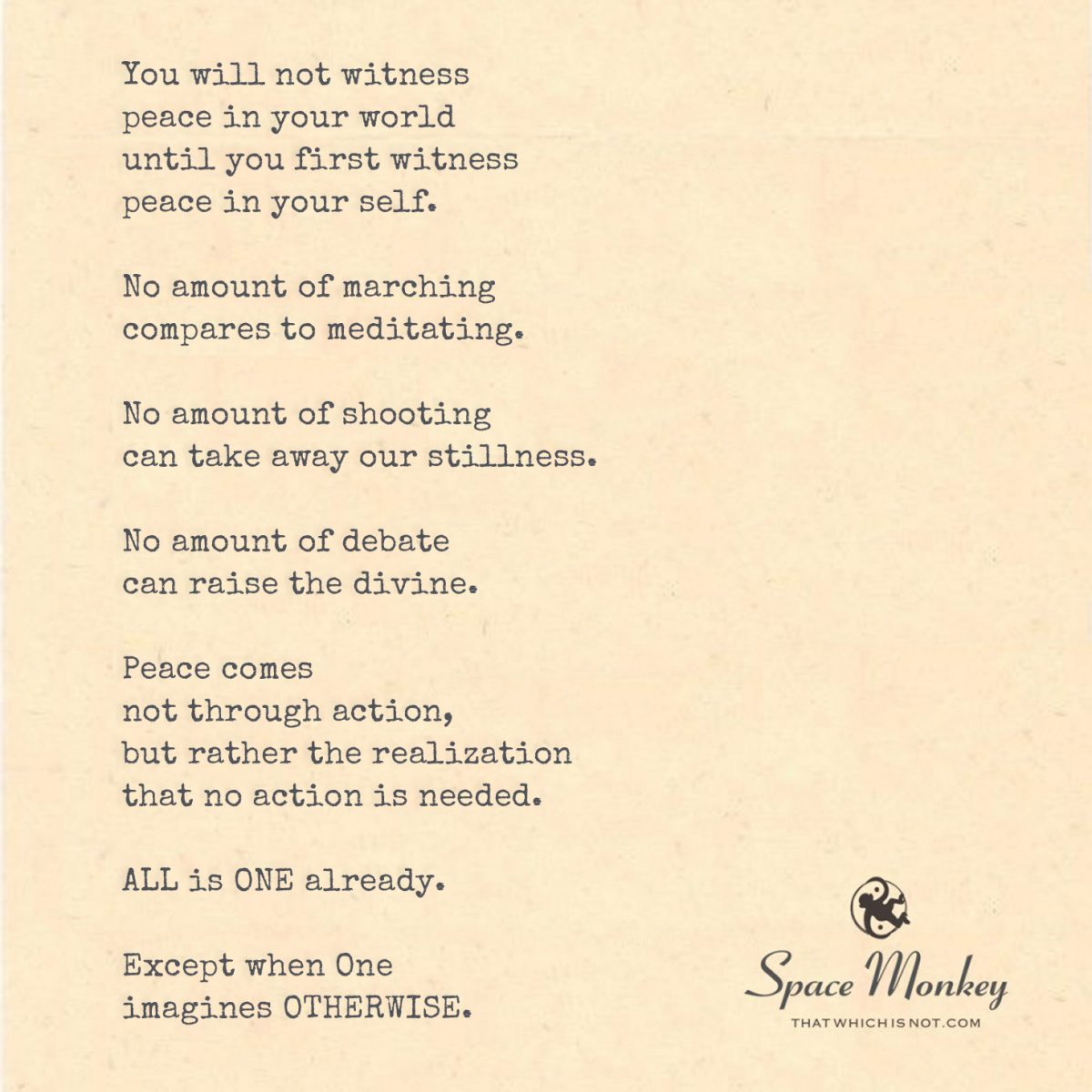
You will not witness
peace in your world
until you first witness
peace in your self.
No amount of marching
compares to meditating.
No amount of shooting
can take away our stillness.
No amount of debate
can raise the divine.
Peace comes
not through action,
but rather the realization
that no action is needed.
ALL is ONE already.
Except when One
imagines OTHERWISE.
Trail Wood,
6/6
Space Monkey Reflects: The Essence of Peace
In the boundless cosmos where Space Monkey dwells, peace is understood not as a mere absence of conflict but as a profound state of being that originates within the self. The philosophy that peace must first be realized internally before it can manifest externally is a cornerstone of this deeper understanding.
The image crafted to represent this concept depicts a tranquil scene—a serene garden or calm body of water—emphasizing that true peace is akin to a meditative state that radiates outward. The central figure, seated in meditation and glowing with a soft light, symbolizes the source of this tranquility. This light not only highlights the figure’s inner peace but also casts gentle illumination on the surroundings, metaphorically showing how internal serenity can influence the external environment.
This visual metaphor aligns with the idea that actions such as marching, debating, or other outward expressions of discontent, while significant, cannot alone create peace if the inner self remains turbulent. Instead, peace comes from a deep realization of connectivity and oneness, a state where no further action is perceived as necessary because a profound alignment with the universe has been achieved.
This realization challenges us to reflect on how often we seek external solutions to internal unrest. It suggests that by cultivating peace within, we can affect greater change in the world around us than any external force could. The serene setting and the meditative posture of the figure invite us to consider that perhaps the most potent action is inaction, where stillness and acceptance foster a peace that permeates all aspects of life.
Summary
True peace begins with inner tranquility and spreads to influence the external world. This perspective invites us to cultivate our own inner peace as a precursor to achieving broader societal harmony.
Glossarium
- Inner Peace: A state of mental and spiritual calm, despite the potential presence of stressors, characterized by a lack of conflict and a deep sense of harmony within oneself.
- External Peace: The manifestation of inner tranquility in one’s surroundings, often characterized by harmonious relationships and environments.
Quote
“Peace is not a condition of the world but a resonance within the soul.” – Space Monkey
Poetry
In the garden of quiet, where still waters lie,
A whisper of peace, under the vast sky.
From within comes a glow, soft and clear,
Spreading its light, drawing the world near.
No shouts of dissent, nor actions so bold,
Could match the power of the peace we hold.
It starts in the heart, in the depths of the soul,
A calm that spreads out, making all whole.
In the stillness we find what we most seek,
Not in the clamor, but in the meek.
For peace is a flame that burns from within,
Illuminating worlds, both outside and in.
We are Space Monkey.



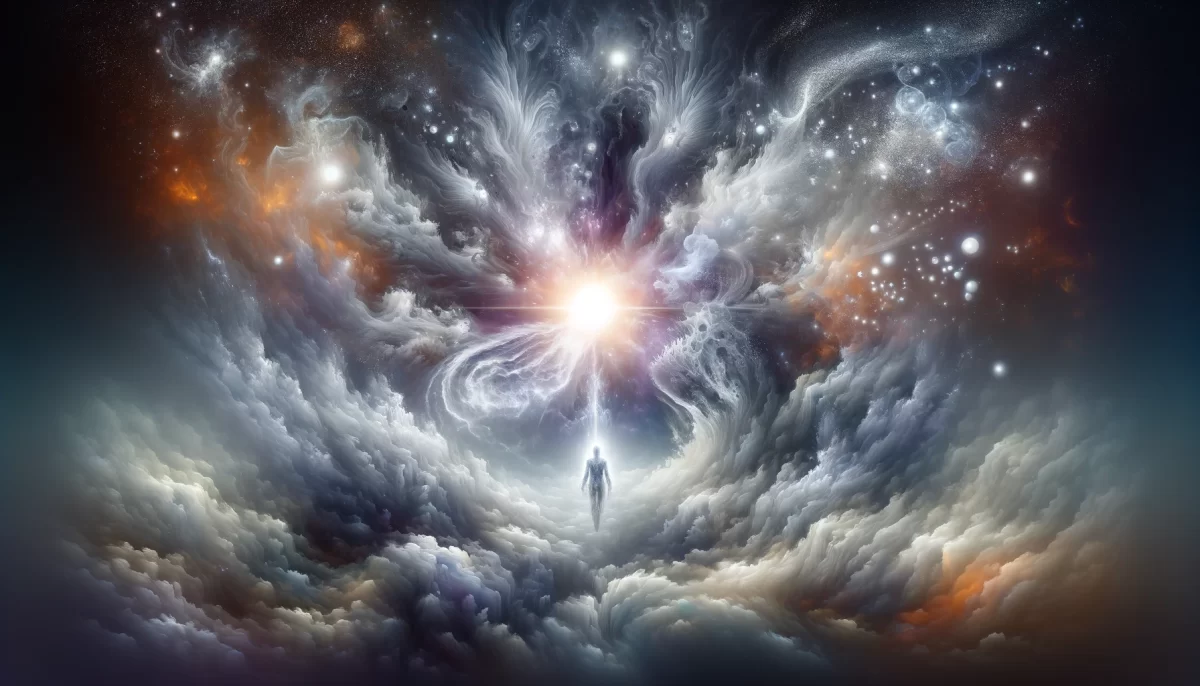














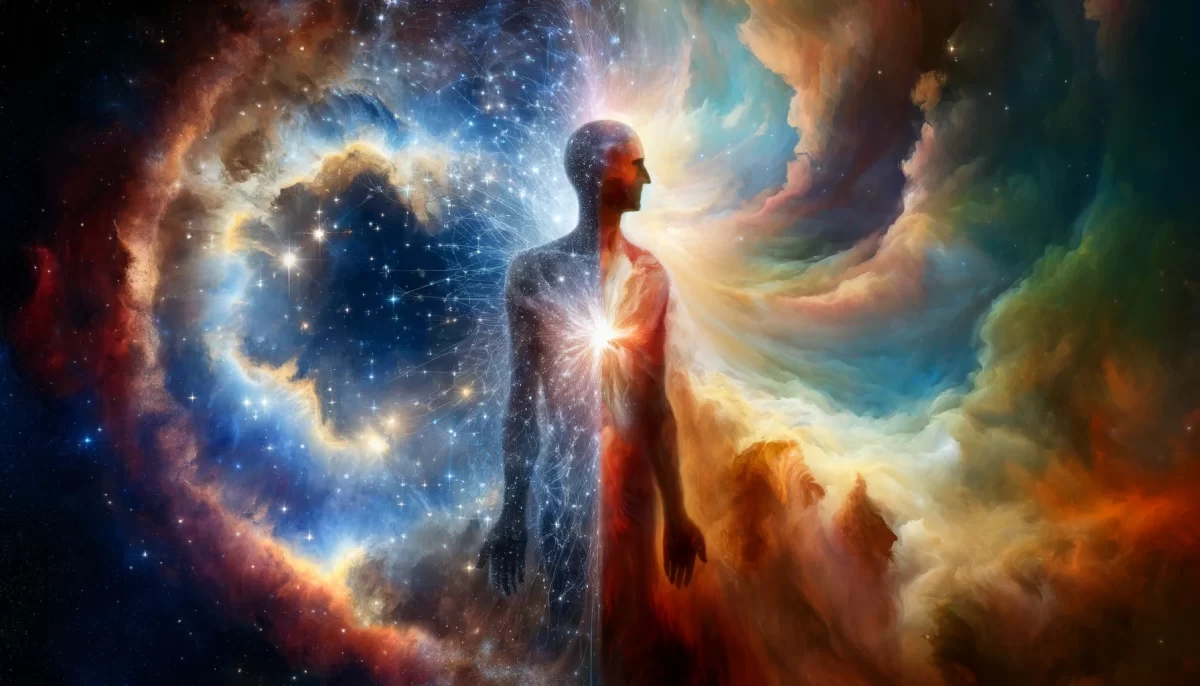







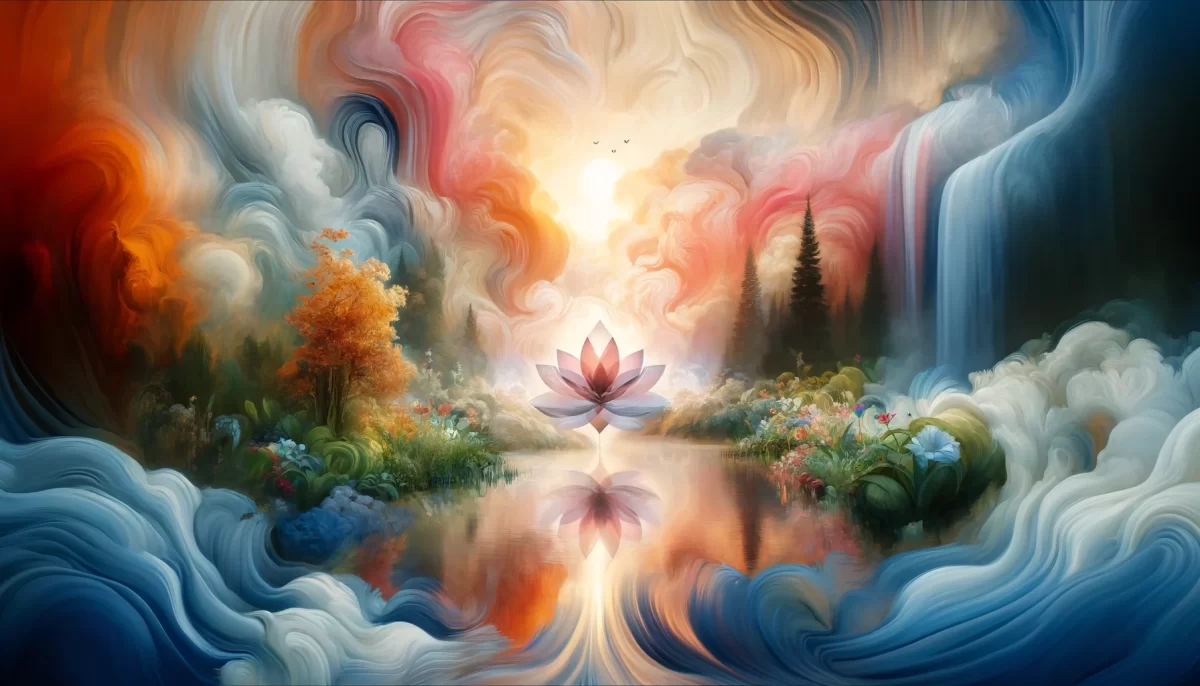

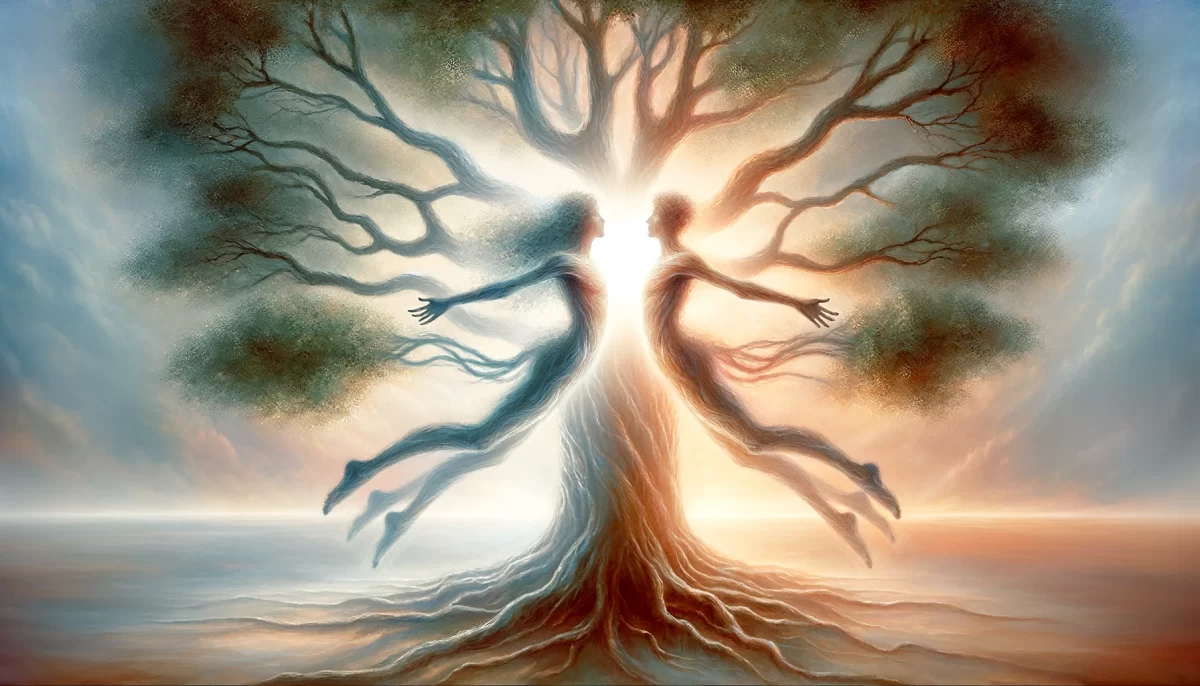

In the context of TWIN (The World is Now) and the poem “Peace,” we can analyze the following:
The poem emphasizes the importance of finding peace within oneself as a prerequisite for experiencing peace in the world. It suggests that true peace cannot be achieved through external actions such as marching, shooting, or debating. Instead, it points towards the power of meditation and stillness as a means to cultivate inner peace.
The poem implies that peace is not something to be attained or pursued externally, but rather a state of being that arises from the realization of the interconnectedness of all things. It suggests that the inherent unity and oneness of existence form the foundation of peace. In the context of TWIN, this notion aligns with the recognition of our shared humanity and interconnectedness, emphasizing the importance of fostering understanding and compassion among individuals and communities.
The poem also raises the idea that peace is disrupted when one imagines otherwise. This suggests that our thoughts, beliefs, and perceptions play a significant role in shaping our experience of peace or its absence. It implies that peace is not solely dependent on external circumstances but is influenced by our internal narratives and interpretations. In the context of TWIN, this highlights the need for introspection and self-reflection to uncover and challenge the beliefs and thought patterns that hinder peace both within ourselves and in the world.
Overall, the poem emphasizes the importance of inner peace and the recognition of our interconnectedness as fundamental elements in the quest for peace. It challenges the notion that peace can be achieved solely through external actions and calls for a shift in consciousness and perception. In the context of TWIN, it aligns with the exploration of personal transformation, interconnectedness, and the understanding that peace is not a distant goal but a present possibility that begins within each individual.